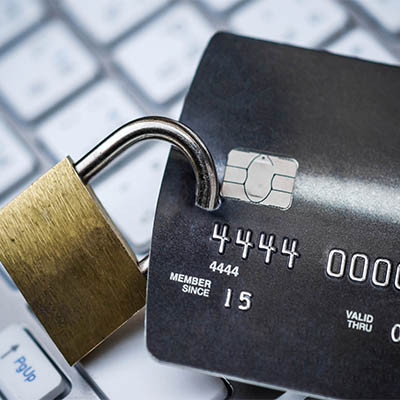Directive Blogs
Credit Card Security in 2021
We’ve spoken in the past about security issues surrounding credit cards, but considering the many advancements and adaptations that have been made to the way businesses can accept payments, it seemed to be a good time to revisit this matter.
Let’s review some of the changes that have been made in the time since, as well as the ways that you can keep your payment cards more secure.
How Has Credit Card Use and Security Changed in 2021?
In some ways, a lot, but also very little.
Credit card technology has advanced significantly. Now, while the famous swipe is far from gone, other methods of using the card are equally (if not more) common. Chip-embedded cards, contactless cards, and mobile payments have come to the fore—particularly as health concerns took precedence and encouraged people to minimize the contact they had with public resources. In fact, Visa reported that March 2020 alone saw over 31 million contactless transactions… up from 25 million just a few months earlier, in November 2019. An April survey that Mastercard conducted showed that 82 percent of respondents (gathered from 19 countries) saw contactless payments as cleaner.
Of course, it’s also important to note that more people are using these cards at home, taking their business online for the sake of safety.
However, the question remains: do modern security measures reduce the risk that credit cards could be under?
The answer is yes, but also very much no.
There Are Still Plenty of Ways Credit Card Data Can Be Stolen
Let’s go through some of the possibilities:
- The physical card is stolen, or someone goes dumpster diving for paper documentation
- Malware is installed on a computing device to collect data
- A device called a skimmer is installed in a payment terminal to collect data surreptitiously
- A user is fooled into providing card details by means of a phishing attack
- Data breaches expose saved financial information, including card details
- Information shared on an unprotected network, such as a public Wi-Fi connection, is harvested
So, in no uncertain terms, there are plenty of means for your card details to be stolen, despite the enhanced security features that many offer.
What Security Features Are Helping to Protect Credit Cards?
Credit cards also come with a few defensive features to help make them more secure. Most notably, there’s the card verification value—better known as the CVV. This three or four-digit code found on the card is used to authorize the transaction, theoretically confirming that the user is in possession of the actual card.
The security benefits really come in on the merchant side. If you accept credit cards for your business, for example, you’ll need to retain the credit card information… with the notable exception of the CVV number. This prevents any data leaks involving credit card details from providing usable information for the cybercriminal. As the CVV is a requirement to complete a transaction, omitting it from the saved details does a lot to prevent unauthorized use.
Of course, as not all merchants require it, it isn’t foolproof, and a scammer could also potentially phish all of the card details—including the CVV—from a victim.
Protecting Credit Card Information
Of course, when it comes to your own credit cards, the onus is really on you to keep them safe. To do so, there are a few ways that you can improve your security.
- Make use of various security tools—Many websites and browsers will offer to save your payment card credentials for your convenience. While handy, these options aren’t always as secure as you need them to be. It is better to use a dedicated password manager to not only save your passwords but payment credentials like these.
- Avoid insecure websites—You always want to make sure that you only put payment card details on websites that can be trusted. One rule of thumb: check the URL to make sure it says “https.”
- Relatedly, avoid insecure connections—Public Wi-Fi may seem like a convenient option, but it should be avoided any time you need to input any information… particularly payment details. Use a private network, and if you have no other choice, only use public Wi-Fi if you have a virtual private network activated to obscure the data you’re transmitting.
One way or another, you don’t want your business to be responsible for leaking credit card details. We can help you ensure that this is far less likely to happen. By protecting your business with security solutions that align with industry standards and best practices, we’ll allow you to focus on your operations. Learn more by giving us a call at 607-433-2200.
Comments


